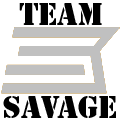Hello,
I started reloading a couple months ago and everything was easy to understand once I learned to set the dies but I started with Neck Sizing and didn't like how tight and pain in the ass it was working the bolt. I then was told to try bumping the neck by .002 and immediately liked how everything felt but trying to figure out how much I bumped it is confusing. I don't know if I actually bumped it only .002 but I bought the Hornady Headspace Comparator Kit, Sinclair Case Trimmer and Redding Competition Shell Holders and can't find good info or a good video showing how to actually do it in the correct steps. Any info would be great. I'm loading for a Model 12 LRP in 6.5
Thanks.







 Reply With Quote
Reply With Quote




 ) provided.
) provided. 


Bookmarks